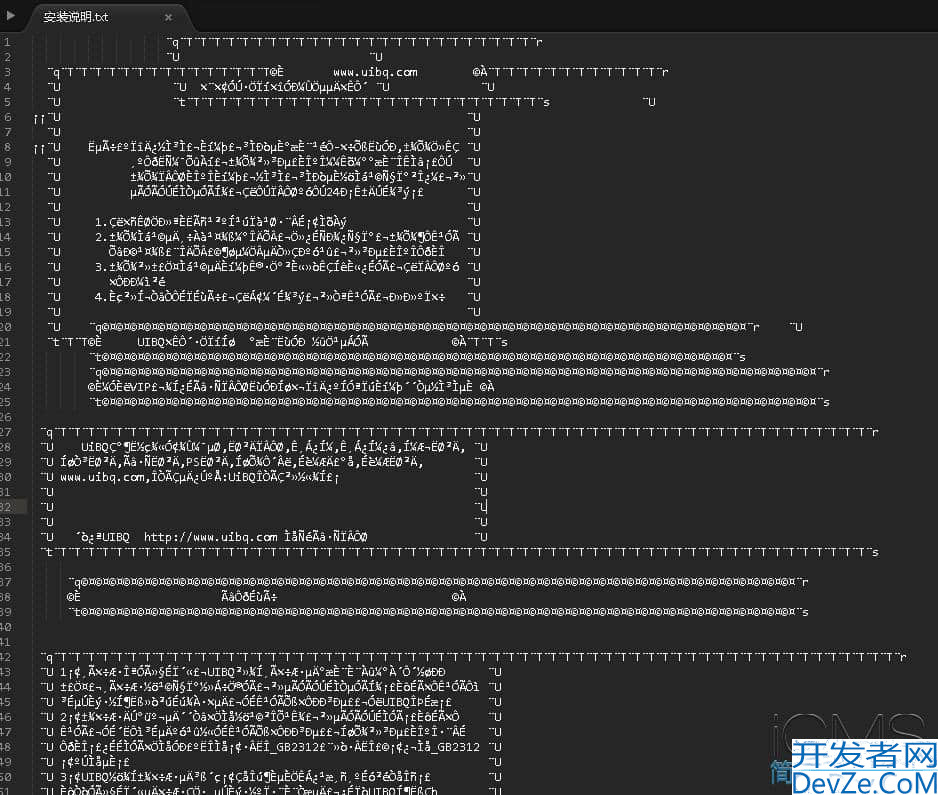Python中PDF解析利器pdfplumber的使用详细教程
目录
- 1. 简介与安装
- 1.1 pdfplumber概述
- 1.2 安装方法
- 1.3 基础使用示例
- 2. 文本提取功能
- 2.1 基本文本提取
- 2.2 带格式的文本提取
- 2.3 按区域提取文本
- 3. 表格提取功能
- 3.1 简单表格提取
- 3.2 复杂表格处理
- 3.3 多页表格处理
- 4. 高级功能
- 4.1 可视化调试
- 4.2 提取图形元素
- 4.3 自定义提取策略
- 5. 性能优化技巧
- 5.1 按需加载页面
- 5.2 并行处理
- 5.3 缓存处理结果
- 6. 实际应用案例
- 6.1 发票信息提取系统
- 6.2 学术论文分析
- 6.3 财务报表转换
- 7. 常见问题与解决方案
- 7.1 中文乱码问题
- 7.2 表格识别不准确
- 7.3 大文件处理内存不足
- 8. 总结与最佳实践
- 8.1 pdfplumber核心优势
- 8.2 适用场景推荐
- 8.3 最佳实践建议
1. 简介与安装
1.1 pdfplumber概述
pdfplumber是一个python库,专门用于从PDF文件中提取文本、表格和其他信息。相比其他PDF处理库,pdfplumber提供了更直观的API和更精确的文本定位能力。
主要特点:
- 精确提取文本(包括位置、字体等信息)
- 高效提取表格数据
- 支持页面级和文档级的操作
- 可视化调试功能
1.2 安装方法
pip install pdfplumber
1.3 基础使用示例
import pdfplumber
with pdfplumber.open("example.pdf") as pdf:
first_page = pdf.pages[0]
print(first_page.extract_text())
代码解释:
- pdfplumber.open()打开PDF文件
- pdf.pages获取所有页面的列表
- extract_text()提取页面文本内容
2. 文本提取功能
2.1 基本文本提取
with pdfplumber.open("report.pdf") as pdf:
for page in pdf.pages:
print(page.extract_text())
应用场景:合同文本分析、报告内容提取等
2.2 带格式的文本提取
with pdfplumber.open("formatted.pdf") as pdf:
page = pdf.pages[0]
words = page.extract_words()
for word in words:
print(f"文本: {word['text']}, 位置: {word['x0'], word['top']}, 字体: {word['fontname']}")
输出示例:
文本: 标题, 位置: (72.0, 84.0), 字体: Helvetica-Bold
文本: 内容, 位置: (72.0, 96.0), 字体: Helvetica
2.3 按区域提取文本
with pdfplumber.open("document.pdf") as pdf:
page = pdf.pages[0]
# 定义区域(x0, top, x1, bottom)
area = (50, 100, 400, 300)
cropped = page.crop(area)
print(cropped.extract_text())
应用场景:提取发票中的特定信息、扫描件中的关键数据等
3. 表格提取功能
3.1 简单表格提取
with pdfplumber.open("data.pdf") as pdf:
page = pdf.pages[0]
table = page.extract_table()
for row in table:
print(row)
输出示例:
['姓名', '年龄', '职业']
['张三', '28', '工程师']['李四', '32', '设计师']
3.2 复杂表格处理
with pdfplumber.open("complex_table.pdf") as pdf:
page = pdf.pages[0]
# 自定义表格设置
table_settings = {
"vertical_strategy": "text",
"horizontal_strategy": "text",
"intersection_y_tolerance": 10
}
table = page.extract_table(table_settings)
参数说明:
- vertical_strategy:垂直分割策略
- horizontal_strategy:水平分割策略
- intersection_y_tolerance:行合并容差
3.3 多页表格处理
with pdfplumber.open("multi_page_table.pdf") as pdf:
full_table = []
for page in pdf.pages:
table = page.extract_table()
if table:
# 跳过表头(假设第一页已经有表头)
if page.page_number > 1:
table = table[1:]
full_table.extend(table)
for row in full_table:
print(row)
应用场景:财务报表分析、数据报表汇总等
4. 高级功能
4.1 可视化调试
with pdfplumber.open("debug.pdf") as pdf:
page = pdf.pages[0]
im = page.to_image()
im.debug_tablefinder().show()
功能说明:
- to_image()将页面转为图像
- debug_tablefinder()高亮显示检测到的表格
- show()显示图像(需要安装Pillow)
4.2 提取图形元素
with pdfplumber.open("drawing.pdf") as pdf:
ySDaoAg page = pdf.pages[0]
lines = page.lines
curves = page.curves
rects = page.rects
print(f"找到 {len(lines)} 条直线")
print(f"找到 {len(curves)} 条曲线")
print(f"找到 {len(rects)} 个矩形")
应用场景:工程图纸分析、设计文档处理等
4.3 自定义提取策略
def custom_extract_method(page):
# 获取所有字符对象
chars = page.chars
# 按y坐标分组(行)
lines = {}
for char in chars:
line_key = round(char["top"])
if line_key not in lines:
lines[line_key] = []
lines[line_key].append(char)
# 按x坐标排序并拼接文本
result = []
for y in sorted(lines.keys()):
line_chars = sorted(lines[y], key=lambda c: c["x0"])
line_text = "".join([c["text"] for c in line_chars])
result.append(line_text)
return "\n".join(result)
with pdfplumber.open("custom.pdf") as pdf:
page = pdf.pages[0]
print(custom_extract_method(page))
应用场景:处理特殊格式的PDF文档
5. 性能优化技巧
5.1 按需加载页面
编程客栈with pdfplumber.open("large.pdf") as pdf:
# 只处理前5页
for page in pdf.pages[:5]:
process(page.extract_text())
5.2 并行处理
from concurrent.futures import ThreadPoolExecutor
def process_page(page):
return page.extract_text()
with pdfplumber.open("big_file.pdf") as pdf:
with ThreadPoolExecutor(max_workers=4) as executor:
results = list(executor.map(process_page, pdf.pages))
5.3 缓存处理结果
import pickle
def extract_and_cache(pdf_path, cache_path):
try:
with open(cache_path, "rb") as f:
return pickle.load(f)
except FileNotFoundError:
with pdfplumber.open(pdf_path) as pdf:
data = [page.extract_text() for page in pdf.pages]
with open(cache_path, "wb") as f:
pickle.dump(data, f)
return data
text_data = extract_and_cache("report.pdf", "report_cache.pkl")
6. 实际应用案例
6.1 发票信息提取系统
def extract_invoice_info(pdf_path):
invoice_data = {
"invoice_no": None,
"date": None,
"total": None
}
with pdfplumber.open(pdf_path) as pdf:
for page in pdf.pages:
text = page.extract_text()
lines = text.split("\n")
for line in lines:
if "发票号码" in line:
invoice_data["invoice_no"] = line.split(":")[1].strip()
elif "日期" in line:
invoice_data["date"] = line.split(":")[1].strip()
elif "合计" in line:
invoice_data["total"] = line.split()[-1]
return invoice_data
6.2 学术论文分析
def analyze_paper(pdf_path):
sections = {
"abstract": "",
"introduction": "",
"conclusion": ""
}
with pdfplumber.open(jspdf_path) as pdf:
current_section = None
for page in pdf.pages:
text = page.extract_text()
for line in text.split("\n"):
line = line.strip()
if line.lower() == "abstract":
current_section = "abstract"
elif line.lower().startswith("1. introduction"):
current_section = "introduction"
elif line.lower().startswith("conclusion"):
current_section = "conclusion"
elif current_section:
sections[current_section] += line + "\n"
return sections
6.3 财务报表转换
import csv
def convert_pdf_to_csv(pdf_path, csv_path):
with pdfplumber.open(pdf_path) as pdf:
with open(csv_path, "w", newline="") as f:
writer = csv.writer(f)
for page in pdf.pages:
table = page.extract_table()
if table:
writer.writerows(table)
7. 常见问题与解决方案
7.1 中文乱码问题
with pdfplumber.open("chinese.pdf") as pdf:
page = pdf.pages[0]
# 确保系统安装了中文字体
text = page.extract_text()
print(text.encode("utf-8").decode("utf-8"))
解决方案:
- 确保系统安装了正确的字体
- 检查Python环境编码设置
- 使用支持中文的PDF解析器参数
7.2 表格识别不准确
table_settings = {
"vertical_strategy": "lines",
"horizontal_strategy": "lines",
"explicit_vertical_lines": page.lines,
"explicit_horizontal_lines": page.lines,
"intersection_x_tolerance": 15,
"intersection_y_tolerance": 15
}
table = page.extract_table(table_settings)
调整策略:
- 尝试不同的分割策略
- 调整容差参数
- 使用可视化调试工具
7.3 大文件处理内存不足
# 逐页处理并立即释放内存
w编程客栈ith pdfplumber.open("huge.pdf") as pdf:
for i, page in enumerate(pdf.pages):
process(page.extract_text())
# 手动释放页面资源
pdf.release_resources()
if i % 10 == 0:
print(f"已处理 {i+1} 页")
8. 总结与最佳实践
8.1 pdfplumber核心优势
- 精确的文本定位:保留文本在页面中的位置信息
- 强大的表格提取:处理复杂表格结构能力突出
- 丰富的元数据:提供字体、大小等格式信息
- 可视化调试:直观验证解析结果
- 灵活的API:支持自定义提取逻辑
8.2 适用场景推荐
优先选择pdfplumber:
- 需要精确文本位置信息的应用
- 复杂PDF表格数据提取
- 需要分析PDF格式和排版的场景
考虑其他方案:
- 仅需简单文本提取(可考虑PyPDF2)
- 需要编辑PDphpF(考虑PyMuPDF)
- 超大PDF文件处理(考虑分页处理)
8.3 最佳实践建议
预处理PDF文件:
# 使用Ghostscript优化PDF
import subprocess
subprocess.run(["gs", "-sDEVICE=pdfwrite", "-dNOPAUSE", "-dBATCH",
"-dSAFER", "-sOutputFile=optimized.pdf", "original.pdf"])
组合使用多种工具:
# 结合PyMuPDF获取更精确的文本位置
import fitz
doc = fitz.open("combined.pdf")
建立错误处理机制:
def safe_extract(pdf_path):
try:
with pdfplumber.open(pdf_path) as pdf:
return pdf.pages[0].extract_text()
except Exception as e:
print(f"处理{pdf_path}时出错: {str(e)}")
return None
性能监控:
import time
start = time.time()
# pdf处理操作
print(f"处理耗时: {time.time()-start:.2f}秒")
pdfplumber是Python生态中最强大的PDF解析库之一,特别适合需要精确提取文本和表格数据的应用场景。通过合理使用其丰富的功能和灵活的API,可以解决大多数PDF处理需求。对于特殊需求,结合其他PDF处理工具和自定义逻辑,能够构建出高效可靠的PDF处理流程。
到此这篇关于Python中PDF解析利器pdfplumber的使用详细教程的文章就介绍到这了,更多相关Python pdfplumber内容请搜索编程客栈(www.devze.com)以前的文章或继续浏览下面的相关文章希望大家以后多多支持编程客栈(www.devze.com)!






 加载中,请稍侯......
加载中,请稍侯......
精彩评论